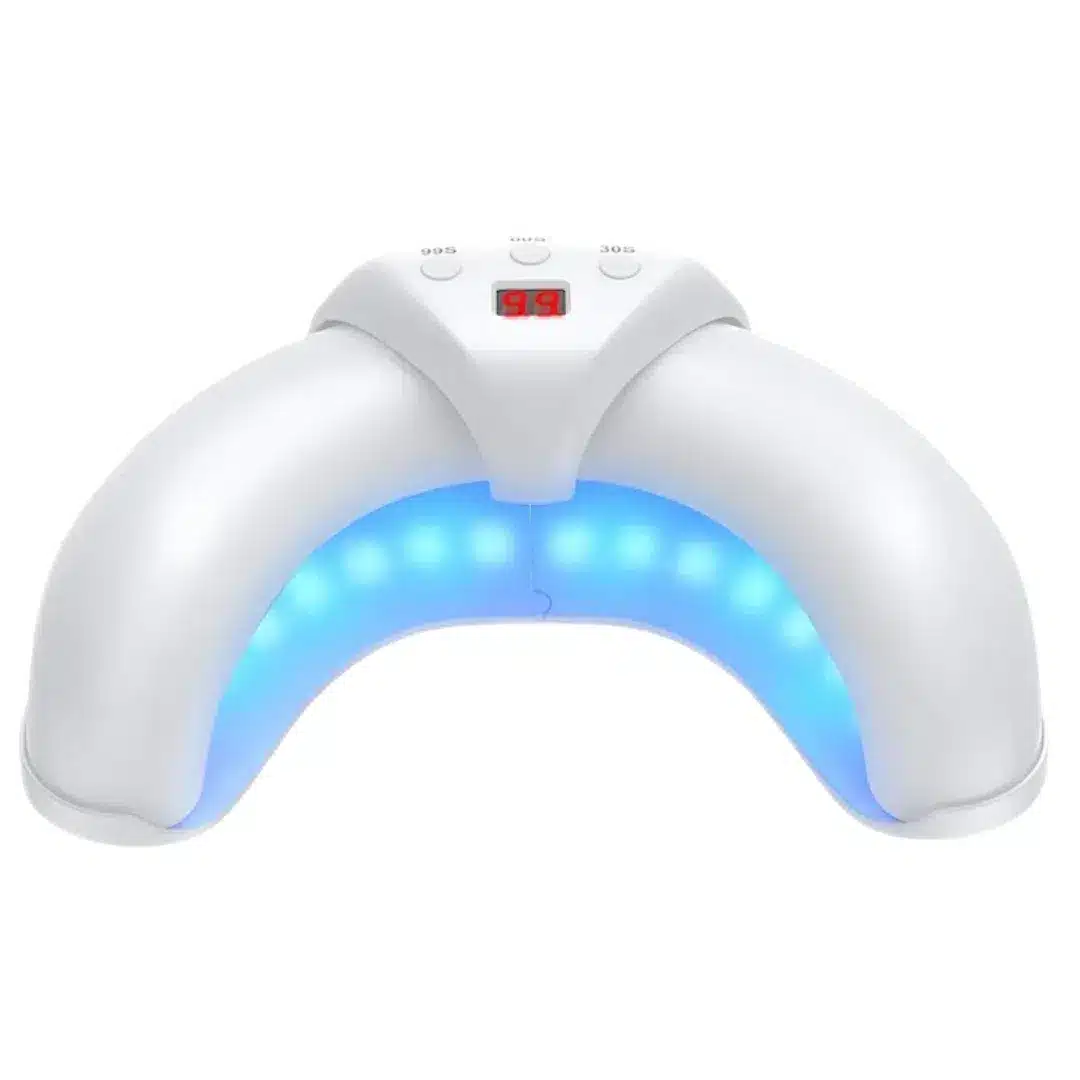As someone who has spent more than a decade in the skincare and dermatology field, I’ve seen countless treatments for nail fungus come and go—some promising swift results, others touting natural solutions, while many fall short once put to the test. When I was introduced to the Okita Nail Fungus Light, a non-invasive, low-level light therapy device, I was intrigued yet skeptical. Nail fungus, after all, has a stubborn reputation—even in professional circles, it can be remarkably difficult to eradicate. I decided to test the Okita device myself, assessing its claims through a detailed, weeks-long trial. Below is a comprehensive review of my experience, observations, and professional insights.
Table of Contents
First Impressions & Product Design
Unboxing the Okita Nail Fungus Light, I was immediately impressed by its compact, ergonomic design. The device is about the size of a small staple gun, lightweight, and feels sturdy in hand. Its design is sleek and intuitive, with a clear display and simple one-button operation. As someone who values both aesthetics and functionality in skincare devices, I found the Okita device blended both aspects brilliantly—perfect for both home and travel. It boasts an automatic shut-off feature after each 7-minute session, which not only protects the skin and nail but also adds a layer of convenience for users who worry about over-treatment.

Ease of Use
The Okita device’s setup requires no assembly, complicated manuals, or technical know-how. I simply charged it via the included USB cable, placed it over my affected toenail, and pressed start. The 7-minute treatment sessions fit comfortably into my evening routine. Unlike topical medications that require careful application and prolonged drying time, or oral antifungals with their associated medical risks, the Okita device was fuss-free and left me time for other self-care activities while it worked.
Technology and Sensation
What sets Okita apart is its low-level laser and dual-wavelength (red and blue light) technology. As a skincare expert, I appreciate the advantage of using light therapy—it penetrates the nail bed, where topical agents usually struggle to reach. While in use, the device produces no heat and is completely painless. I experienced no tingling, discomfort, or heat sensation, which speaks to its safety profile—especially important for those with sensitive skin or demographics like the elderly.
Efficacy: Observed Results
Over the course of my eight-week test, I diligently used the device on my big toenail, which had developed mild-to-moderate fungal discoloration and thickening after repeated trips to public swimming pools. Results weren’t immediate—the first week showed little visible change, which aligns with medical expectations for onychomycosis (nail fungus) treatment. However, by the end of week three, I began to see the yellowish discoloration at the proximal nail (growth area) start to fade. The thickening, too, started to diminish ever so slightly.
The most impressive transformation became evident around the 5th week: new nail growth emerged clearer, and the surrounding skin looked healthier and less inflamed. By the end of the eighth week, over half the infected nail had grown out, looking significantly more normal in color and texture. I paired the device therapy with regular nail hygiene (filing, cutting, and disinfection) as advised by podiatric best practices, and abstained from topical antifungal creams in order to isolate the device’s effects.
Safety & Comfort
One concern many of my clients have is potential side effects from laser treatments, but I can confidently report that the Okita Nail Fungus Light caused absolutely no irritation, burning, or photosensitivity. I tested it at different times—morning, evening, after showers, on both bare and dry feet—and never experienced adverse reactions. Its non-UV technology greatly reduces long-term risks, and it is silent in operation, which is a bonus for use at night. The timer function provided peace of mind—I didn’t have to stare at the clock or worry about overexposure.
Professional Assessment
From a dermatological perspective, the science behind the Okita device holds credibility. Laser and light therapies are validated treatment modalities for fungal infections, and devices targeting the 600nm–900nm range can penetrate the nail plate effectively. The Okita model seems to deliver sufficient intensity to disrupt fungal colonies at the source. However, as an expert, I must stress the importance of patience—nail fungus cannot be reversed overnight; but with consistent, daily use, results are not only possible but highly probable, especially for mild to moderate cases.
Value for Money & Final Verdict
When compared to repeated doctor visits, prescription medications, or salon-based laser treatments, the Okita Nail Fungus Light represents outstanding value. Its one-time cost can be less than a single course of prescription antifungals—without systemic side effects, liver monitoring, or prescription renewals.
Would I recommend the Okita Nail Fungus Light? Absolutely. For those seeking a safe, user-friendly, and effective home solution to stubborn nail fungus, Okita delivers noticeable results with minimal hassle. It democratizes light-based therapy, bringing clinical-grade technology into your everyday routine. In my expert opinion, based on firsthand experience and clinical knowledge, Okita is worth buying for anyone serious about restoring healthy nails without harsh chemicals or systemic medications.